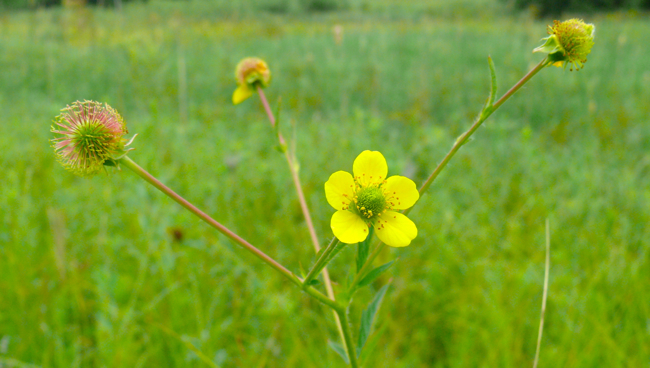The prairies are blooming, and we’ve seen one great new animal and one unusual bird. And there are always good bugs!
Our wildlife camera captured a picture of a Fisher this week. Fishers are in the same family as weasels – they’re carnivores that eat other small mammals. They’re more common in the northern part of Wisconsin, but they seem to be spreading south to other forested parts of the state. Mike had seen one before, once, but it’s nice to have a photo.
Fisher
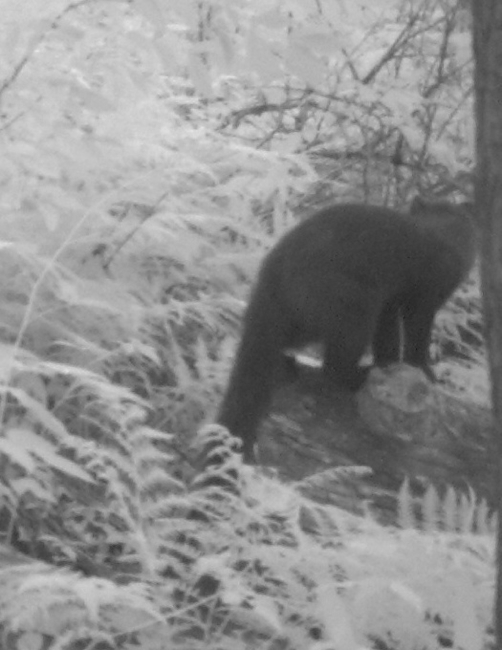
The other good creature of the week is a Bobolink. I’ve been hoping to attract nesting Bobolinks, but so far that hasn’t happened. Every few years I see a small flock – maybe a family – of Bobolinks in one of our prairies. It’s usually at the end of the summer, probably when they’re getting ready to migrate. This week we saw a flock of 4 birds, two males, and two females or juveniles. Here’s one of the males in the wetland.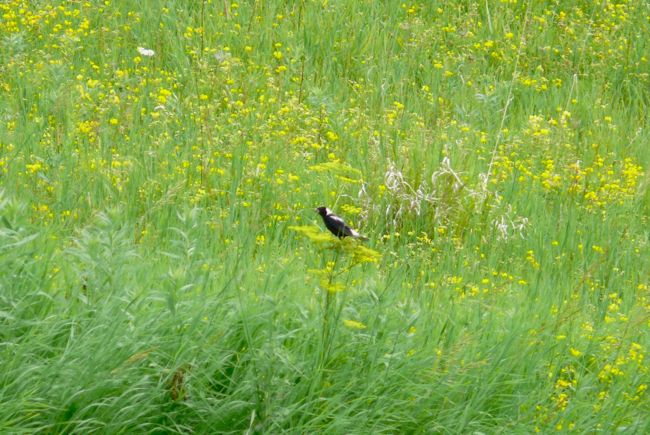
This is Buffalo Ridge Prairie – one of my favorite plantings. It’s 5 years old this summer.
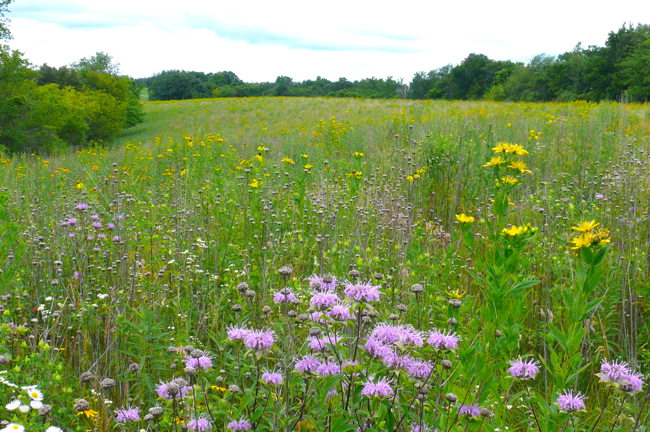
Another view of Buffalo Ridge
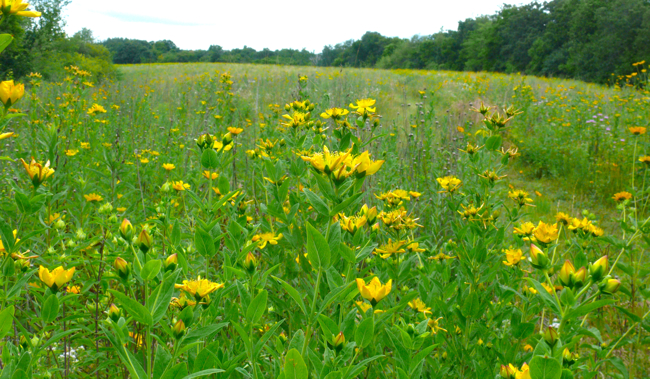
One of the flowers that’s blooming now is Oxeye, or False Sunflower (Heliopsis helianthoides). Its flowers attract all kinds of interesting insects.
This is a crab spider, waiting for an insect to come along that it can prey on.
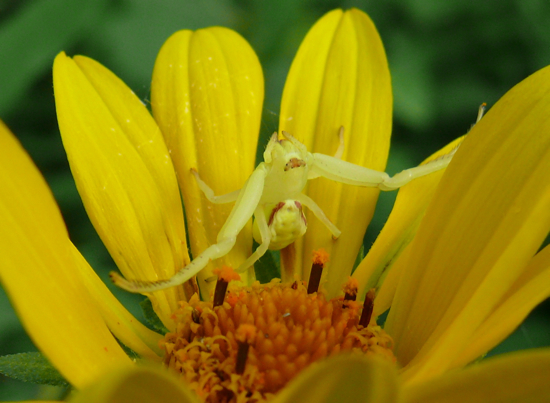
Another Oxeye with some unidentified bugs
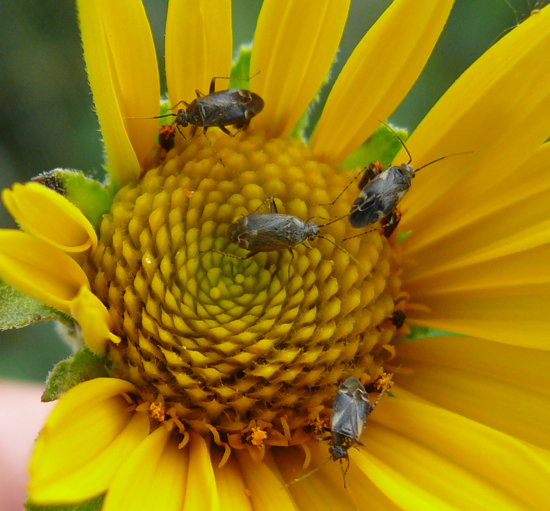
An Oxeye with an Ichneumon Wasp – the bright colored legs show it’s in the subfamily Pimplinae.
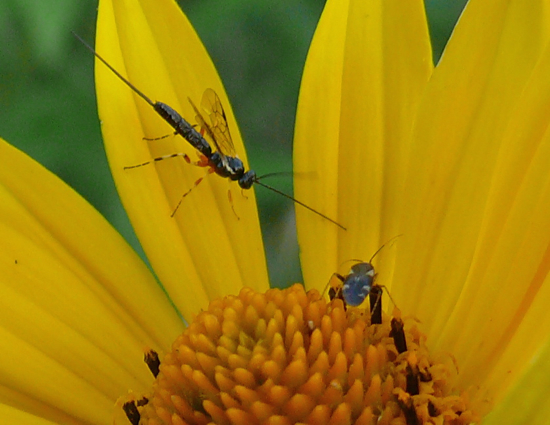
Oxeye with a Plant Bug in the genus Neurocolpus. It’s being a pollinator for this flower – you can see the bright gold pollen on its back.
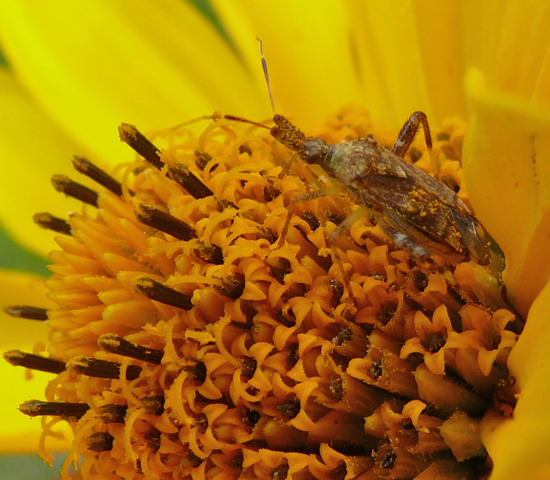
Another yellow flower – a Golden Aster (Heterotheca villosa) with an inchworm caterpillar.
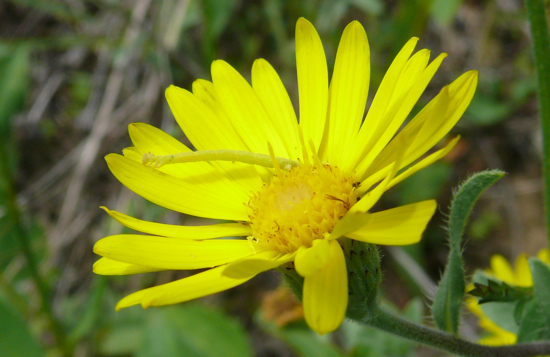
These are Linden Lace Bugs – one adult and lots of juveniles – on the underside of a Linden leaf.
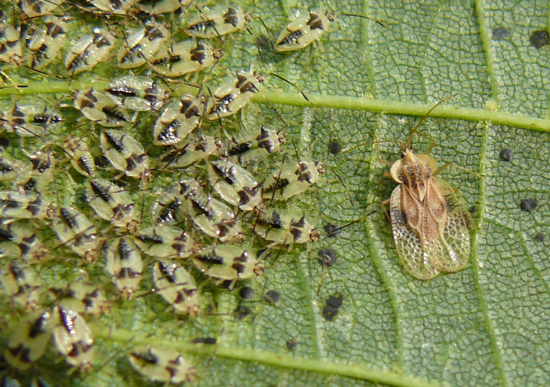
These little bugs are leaf hoppers. They eat leaves, and hop in huge jumps when disturbed. They’re tiny – less than 1/2 an inch long – but their coloring is very bright. I think these are both the same species (Graphocephala sp.).
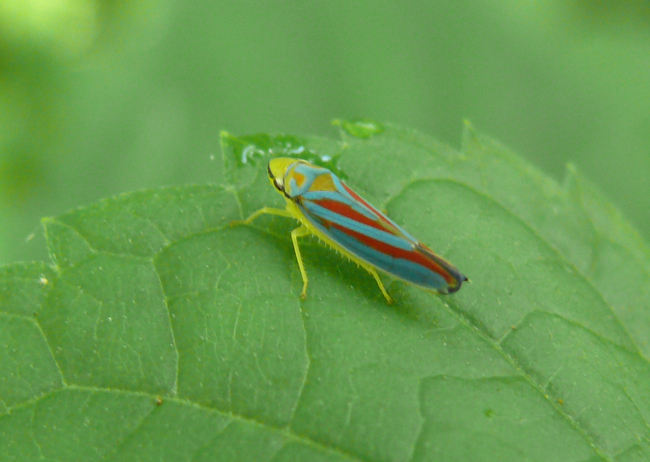
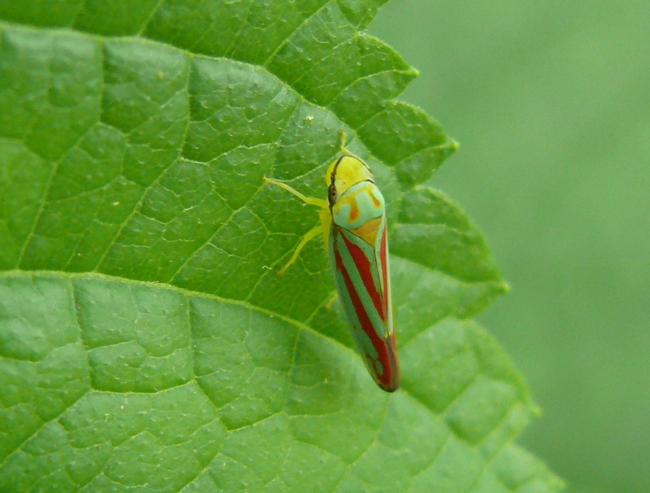
Here are some more insects from the last few weeks.
Ctenucha Moth
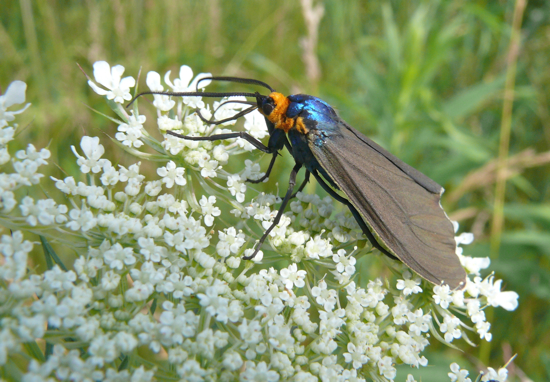
Daddy Longlegs – also called a Harvestman
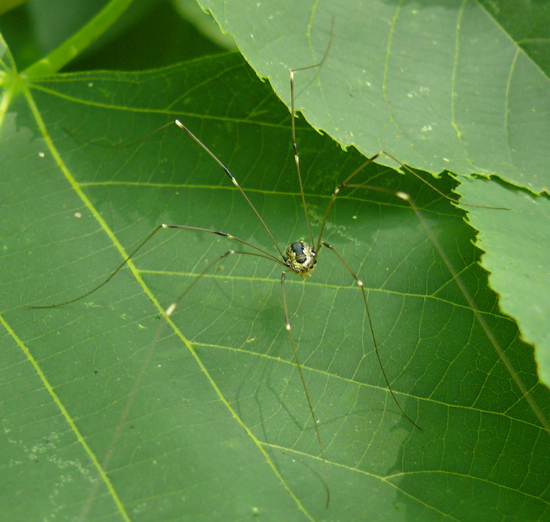
Delaware Skipper – I think
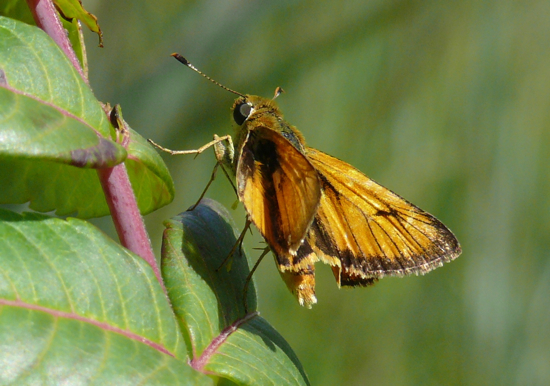
An Eastern Comma (you can see the white ‘comma’ on the underside of the wing) resting in the shade during the hot part of the day.
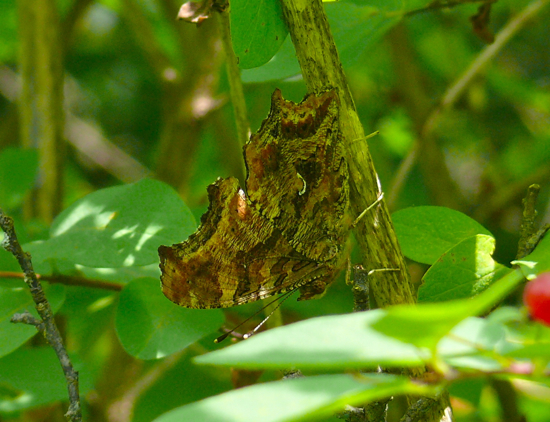
Common Wood Nymph (butterfly)
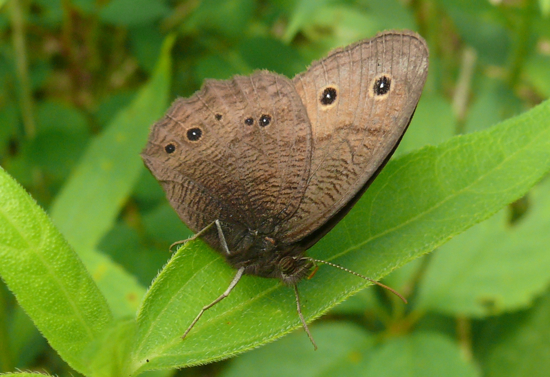
Eyed Brown (butterfly)
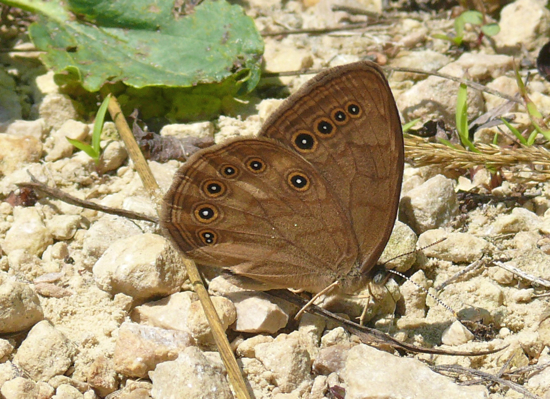
Little Wood Satyr (butterfly)
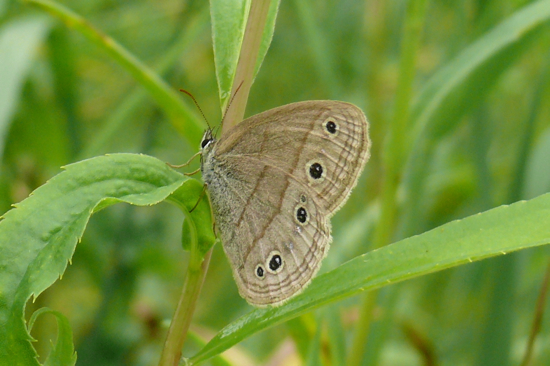
Northern Pearly-eye (butterfly) – There are a lot of brown butterflies in the middle of the summer. They fly low to the ground, hide very successfully behind leaves, and are often mistaken for moths. This Northern Pearly-eye has brighter colors than I’ve ever seen before.
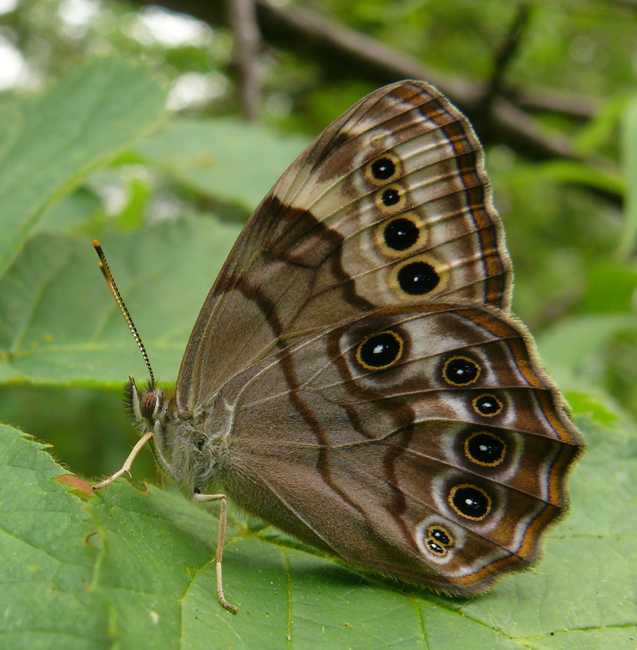
Red-spotted Purple
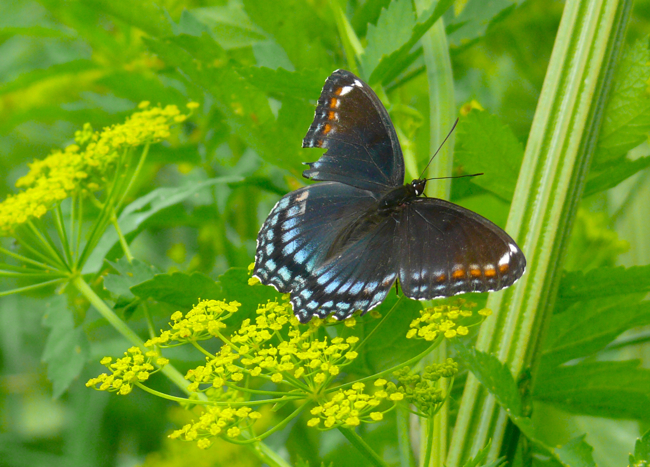
These are two Robberflies. Many Robberflies mimic bees or other insects. The one on the right is a bumble bee mimic, the one on the left is a different species – both are in the genus Laphria.
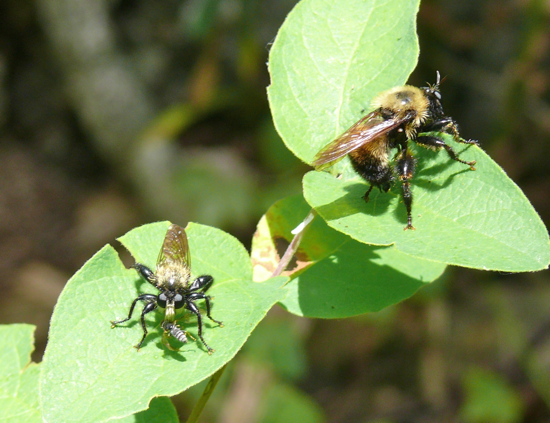
I usually don’t spend much time on Sumac Prairie in the middle of the summer – it’s too hot and sunny. But on one of the cool days I took a walk there, and discovered a field of Whorled Milkweed.
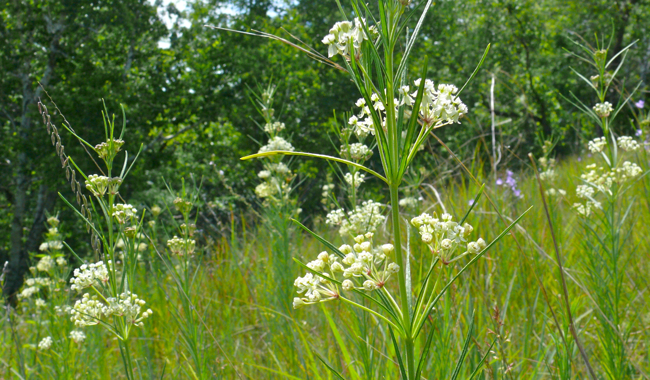
And a Monarch Caterpillar feeding on the milkweed
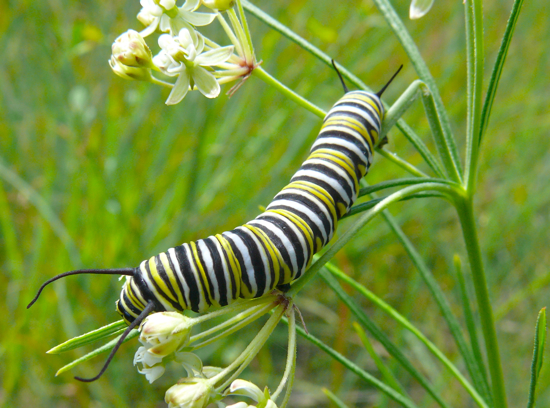
Another nice area of common milkweed is near where the old farmhouse used to be. The house burned down about 25 years ago, and plants have grown up, hiding the rubble – some weeds, some natives, and some old-fashioned garden flowers. I always find Irises and Peonies there in the early summer, and there are plenty of lilacs for my cecropia caterpillars. Here’s the milkweed meadow.

This is a Pyrola, or Shinleaf. It’s a little woodland flower that blooms in early to mid-summer. I see lots of its leaves, but seldom find the flowers.
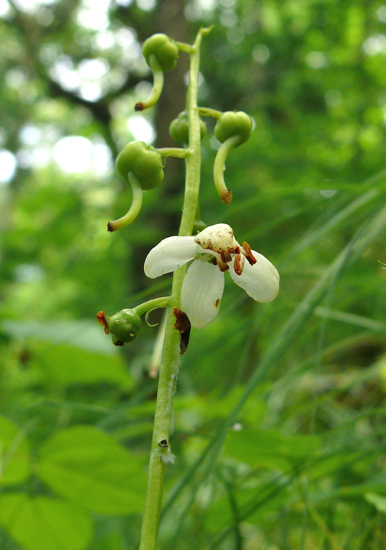
Prairie Coreopsis on Indian Grass Point
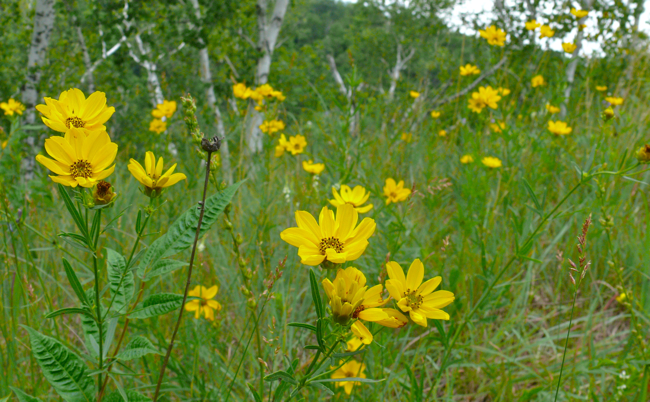
Field Milkwort – a tiny annual that blooms in a prairie remnant right above the house
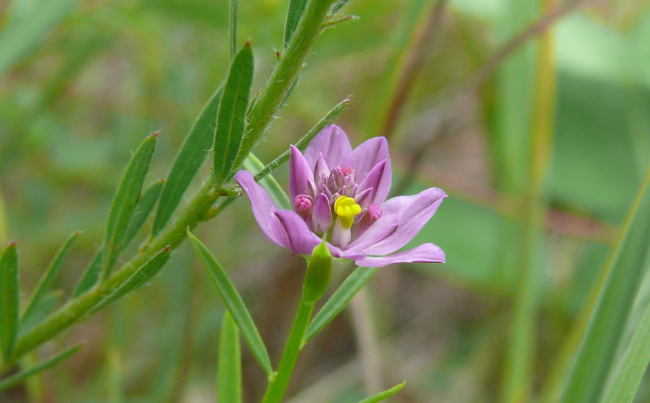
And a new record for Buffalo County – Yellow Avens
